My Maidan memories: Living through Ukraine's nightmare year (Part 2)
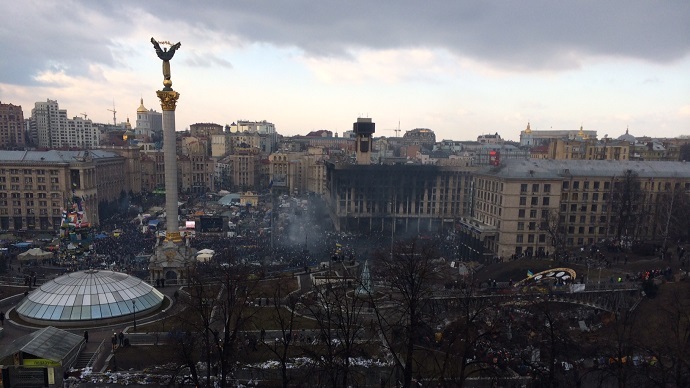
It was a regular cold winter's day – February 18, 2014 – and nothing suggested trouble. I was cooking dinner at home in Moscow whilst idly following Twitter reports of growing unrest in Kiev.
“Oh, another one,” I thought. “Just when I thought things were calming down.” We’d been down that very same road just a month earlier – just when everyone thought things had come to a standstill, violence erupted.
READ MORE: Living through Ukraine's nightmare year (Part 1)
Roughly six hours later I was standing alongside a huge RT crew at Kiev’s Maidan Square, watching the protester-occupied Labor Union building blazing. It looked so much worse than before that it was genuinely terrifying. But I still had no idea about the extent of the nightmare I just walked into.
But allow me to go back a little. To New Year’s Eve 2013. For a news reporter, these nights are not always about celebration and festivities, but work. In December 2013, I was stationed in Kiev covering the ongoing Maidan protests, and management had told me several weeks earlier that I would be taking part in RT’s special New Year coverage – direct from Kiev’s central square, which by then had endured a month-long siege.
That particular Maidan looked like it was coming to end, inevitably. Many who were strongly energized with protest spirit just a month earlier had become exhausted by this stalemate, which produced no visible results. Some Kiev residents I knew – ardent opposition and supporters of Yanukovich alike - had actually grown irritated with the Maidan. Blocked streets, hordes of “guests of the capital” roaming central Kiev and no visible outcome from their dissent. Even the authorities were no longer trying to shut the protest down – in the early days of December 2013, I witnessed several attempts by police to disperse the tent camp. It all came down to merely pushing and shoving, just like in the days of the 2004 Orange Revolution.
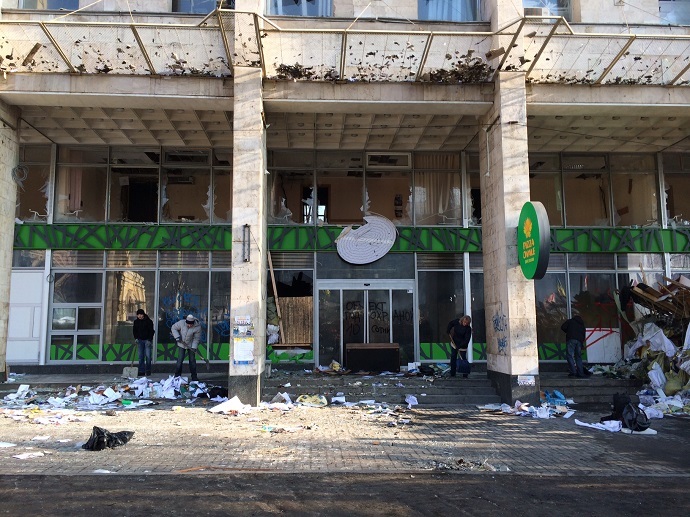
This even made it into humorous folklore – Ukrainians don’t like to fight, they would rather patiently and non-violently besiege the central square and wait until their foes just give up, having grown tired of seeing flags waved. All factors considered, even optimistic supporters of Maidan among my friends turned skeptical, thinking this whole movement would completely die down as soon as it became too cold to protest. My colleague, then-reporter for the Russian news website Lenta.ru, Ilya Azar, also suggested in his pre-New Year piece that Maidan would likely disperse for lack of motivation and clear strategy.
I left Kiev on January 3, after almost two months, and I remember telling my wife as we boarded the plane: “We might be in for an indefinite break from Kiev trips; I don’t expect things to flare up here any time soon.”
Again, we were all wrong thinking this protest could be over. Very, very wrong.
The situation started going belly-up less than three weeks after New Year’s Eve. And that was another time I had to urgently board a plane to Kiev, literally not having finished dinner with my family. Violence flared up at the corner of the so-called governmental quarter – just off Grushevskogo street. Ironically, the situation exploded during what the opposition called a peace march on the parliament. So much for peace.
I recall telling my crew when they asked me whether things were really bad this time that Ukraine could always treat us to an unexpected twist of events, but it seldom got really violent. We were quickly proven that this was not an axiom, as we delved into the noisy – protesters continuously banging on metal objects generating deafening cacophony – epicenter of tensions on Grushevskogo Street, with the air above central Kiev poisoned with the scent of burning tires and tear gas.
Our January stint on Maidan was one crazy roller coaster. The first few days – or should I rather say nights – were almost entirely sleepless. We sat in our hotel room overlooking the riot scene (still, to this day, I think we had the best vantage point of all media covering the unrest) and waited for something to happen.
Some nights were calm, some were not, but we were always working. Endless live hits, frozen feet, tons of coffee and energy drinks. It was the first time since the protests began that bullets – although non-lethal at that time – started flying over central Kiev. Violence started pouring over the edge from both sides, with protesters using Molotov cocktails against law enforcement officials, while the latter responded with rubber bullets and pellets. I got hit on the back with those pellets – quite obviously coming from the police – twice while doing a report from the balcony of the hotel. I don’t know if it was deliberate or just a stray shot, but my bulletproof vest made sure my injuries were restricted to a slight swelling.
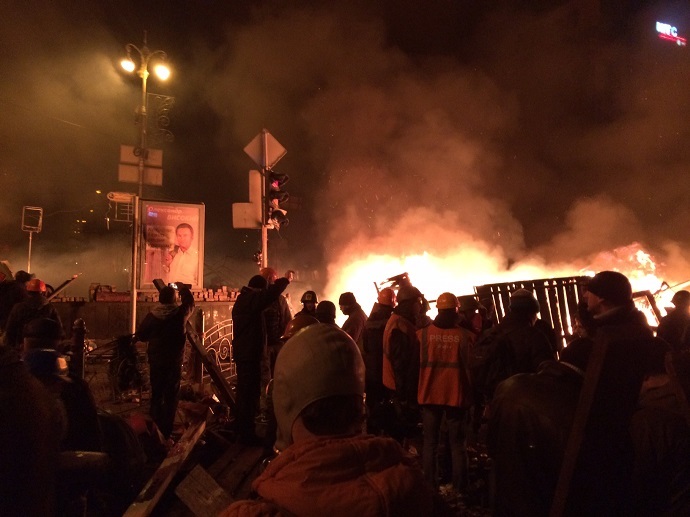
And then came the Unity Day of Ukraine, on January 22. I woke up at seven in the morning to a phone call from my cameraman. “Alex, you’ve got to get over here, to my room,” he said with a shaking voice. “The police are on the offensive and they have just shot at me while I was trying to film out of the window. Thank God they missed.” The whole day was a bit of a blur – we went live in the middle of the major brawl between the protesters and the police.
While I was on the receiving end of pellets reporting from the balcony, my colleague Peter Oliver found himself in the thick of the fighting. Several hours later the first casualty was confirmed – protester Sergey Nigoyan was said to have died after a supposedly non-lethal police bullet hit him in the carotid artery. Then another one dead – a Belarusian mercenary fighting along the radical nationalist Ukrainian National Assembly-Ukrainian People's Self Defense Organization (UNA-UNSO) movement.
Things were spiraling out of control. But – as had usually happened in the case of Ukraine – receded to another standstill just as quickly. Not to mention a nervous standoff at the Ukrainsky Dom museum in the freezing cold for a few hours, with a few dozen policemen barricading themselves inside and protesters forcing them out.
It now seems naive, but we kept thinking all the time back then that this was surely the limit of this violence. It couldn't get any worse than this, and the political forces would now find a compromise. But it was the first time then that I had an idea which seemed crazy and unthinkable, maybe even like a conspiracy theory (which I genuinely despise): that somebody did not want the Maidan demonstrations to end. That someone was interested in going to the very end. That this protest was forcefully evolving from peaceful, popular and quite justified unrest into a violent cynical revolution, tailored to suit someone’s needs.
Nevertheless, I left Kiev again in the first few days of February. Again thinking my Maidan-break would last for months. The opposition and those in power were negotiating, tires were no longer burning and the riot scene at the corner of Grushevskogo went quiet. It was déjà vu – after emotions exploded for a short while, it went back to square one. So typical and common. Roughly 10 days later, the 72 hours that changed Ukraine forever began.
On February 18, when we got to Maidan, it had literally turned into burning hell. The whole square was ablaze. The adjoining Trade Unions Building – headquarters of the Maidan – was blazing and flashbang grenades were exploding all over the place.
We made a bad choice in booking the same hotel where we had stayed in January, but we couldn’t even get close to it – a polite, yet very nervous policemen told us that area was unsafe and it was completely cordoned off. “They are using live rounds against us,” we were told by a sergeant. We didn’t have time to be shocked by such statement or attempt to verify it (although some popping sounds were indeed audible in the distance). We had to find a way to get settled and get our work done as soon as possible.
Going live all night via broadband, it was only by 7am that we found a way to sneak over to the other side of the barricade – to the Hotel Ukraina – where we had a studio for a proper live hit. And it took us almost a full hour to find a detour around the burning barricades. From the height of the seventh floor, Maidan looked like a hellish cauldron.
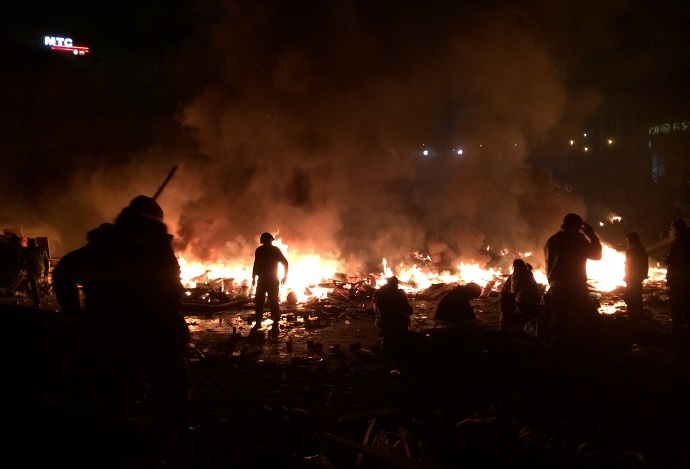
The next day – also filled with live reports and a lot of filming – we heard of a symbolic truce which the opposition and the authorities struck. It was then that I first made it to the police side of the protest, by the Dnipro Hotel. I was wearing my press vest, and different policemen had, to put it mildly, different reactions to that. Some were polite and cooperative; some shouted at me that I had to get the hell out of there.
In any case, I was interested in what the mood was like on the other side and had a few chats with them. Needless to say I was surprised to learn that they were either boiling mad (for not being given orders to “mash those protesters into the ground”) or scared – many of them again said they were shot at with live ammunition by the protesters. Nevertheless, despite Maidan still burning and smoldering, it seemed that some kind of truce really was holding. Some of the police by the government building were quite relaxed and told me they couldn’t wait to change shifts – standing out there in the freezing cold for days was taking a toll on them too.
Video: /files/opinionpost/38/f5/70/00/2591745_yarosh2_web.mp4
On February 20, I woke up at 8am, as I had a live hit scheduled for 9am. I monitored updates as I brushed my teeth – it seemed that the night had passed relatively calmly and nothing suggested that things would go otherwise. That’s when I also received a text from my wife: “It seems quite peaceful there, I just watched the news.” But as I walked towards Hotel Ukraina I saw several flipped burnt cars on the sidewalk of Institutskaya Street.
A grumpy policeman told me that I could proceed down the street only at my own risk. “But there’s a truce, isn’t there?” I asked. He silently pointed at a burnt car, suggesting that was not the case. As I made my way further down the street, I saw an absolutely blood-chilling picture: scores of policemen lay on ambulance stretchers, all with different injuries. Some were bleeding heavily. One of them apparently had part of his hand blown off. That did not look like a truce at all. And by the time I reached my live hit spot just outside the hotel, the showdown began – right as I spoke live on air.
You could see for yourselves in that raw video that things were spiraling out of control very quickly and, I have to admit, it was very scary. Particularly because this was happening in one of the friendliest cities on the planet. Just an hour later I filmed the first wounded (most of them later died) carried into the hotel lobby, which was turned into a field hospital by the protesters. Several minutes after I filmed a video which still gives me a lot of doubts as to how this massacre happened on that day – on it you could see unarmed protesters moving towards police lines and a man who just fired a rifle running back.
Video: /files/opinionpost/38/f5/70/00/2591744_yarosh1_web.mp4
Just minutes later my cameraman and I were nearly killed in the hotel room we were about to broadcast live from by what looked like a sniper shot. I don’t really want to go on about this all over again – especially with my colleagues now risking their lives in the war zone – but I’m still trying to understand who wanted us dead at that moment.
That brings me to the investigation of Maidan snipers. Or should I say, the non-investigation of it? In the most recent twist (and what a bizarre one too), the newly-appointed prosecutor general of Ukraine said at a press conference in Kiev that “investigators had no data supporting the notion that Maidan activists fired lethal rounds at the police.” That was his response to a belated, but nonetheless important investigation by the BBC’s Gabriel Gatehouse. Oh, well. So the people dressed in military uniforms and self-made helmets who WE filmed firing sniper shots from the top floor of the Hotel towards the police lines must have been someone else then.
And 13 policemen who were confirmed dead on February 20 must have shot themselves. And a guy who I filmed hastily retreating from the police lines with a smoking rifle must have just been taking a morning jog. I don’t mean to be overly sarcastic about this, but I would certainly appreciate it if those investigating the tragedy at the Maidan would consider the evidence we filmed, as well as witness accounts provided by the German ARD channel and the BBC.
The prosecutor general might also care to investigate why the coordinators from UNA-UNSO movement – the only ones present at the Maidan with actual military experience – who had previously been sitting quietly in their tents on the square, were seen roaming around at Hotel Ukraina on that day, whilst one of them directed the initial assault on the police from the stage. And there is plenty of documented evidence of that. Just as he would probably want to investigate why one of the opposition MPs was trying to remove a sniper rifle in a case from the scene. Or maybe the fact that those bullets which hit the interiors of the Hotel Ukraina were unmarked – meaning they could not have belonged to law enforcement. We would happily provide all the footage and physical evidence we have. But nobody has ever asked for it.
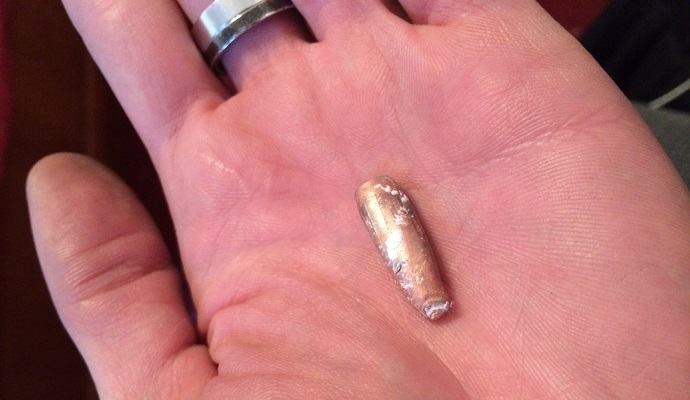
As I've said before, I despise and detest conspiracy theories. Until proven otherwise, I'll regard all statements and allegations that the Maidan massacre was orchestrated by the CIA/FSB as total nonsense. I do not want to accuse anyone in particular with this article. I do, however, feel that the spark which ignited the peaceful protest and turned it into a fully-fledged murder spree came from someone else. And it pains me personally that nothing is being done to investigate it. There are still no solid facts proving involvement of any third party, but only because no efforts have been made by investigators. And for my part, I know that this tragedy didn’t happen out of the blue – that it was well orchestrated. Simply because I only believe my own eyes and I witnessed Maidan in its entirety – from a small and cozy gathering on a warm November evening to the bloodletting catastrophe.
If you read part 1 of my Maidan memories, you know how I felt about this movement when it began – I was largely on board with what the protesters were saying. And I still refuse to believe that the very same people I shared the Maidan with back in November – smart, peaceful and aspiring to changes for their country – would have ever wanted to see corpses of their compatriots piling up on the streets of their capital. Or would have taken up arms and become cold-blooded killers. Their idea was to inspire change through peaceful means, to change the government through early elections and make their country strong and prosperous.
Until what started as a movement with a noble cause was hijacked by those believing the change may only come through spilling a lot of blood. 'Hijacked' might sound like a bad cliché, but to me this is exactly what happened with Maidan. I have acquired enough accounts from policemen prior to and after the shooting which suggested they had no orders to shoot unarmed protesters, only using lethal force to protect themselves against rioters armed with lethal firearms and shooting at them. Just as I have recorded enough accounts from people from the Maidan – including a former opposition MP at that time – who said going on an armed offensive was never the plan. There’s enough material for a book, which I may write one day.
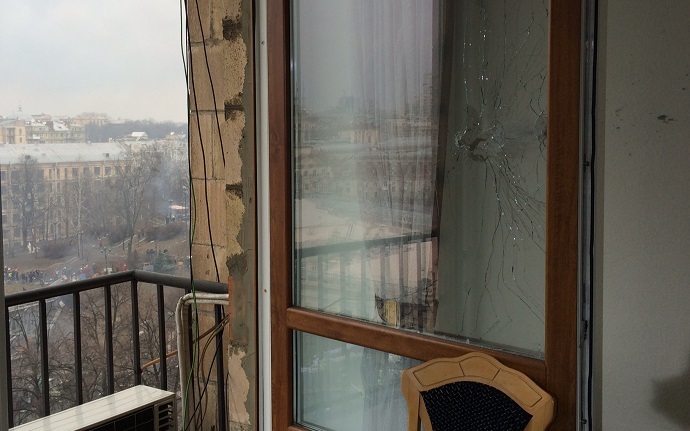
On the evening of February 20, my sound man and I went for a quick grocery run. We hadn’t eaten for almost 30 hours by that point, as it was too dangerous to get out of the hotel. On our way back we saw doctors carrying the dead towards the Maidan square for a vigil. One, two, seven…we counted at least 13 bodies. One of those looked like it had been decapitated, or hit with a high-caliber rifle in the head. By then, large parts of Maidan were covered with dead bodies. Most of these people were unarmed when they were killed, but there is still no definite answer as to who pulled the trigger.
Who wanted this blood? I fear that we will never know. At least the unwillingness to investigate it suggests that this may be a very well-guarded secret. But I can make this promise here – while I’m alive, I will not stop looking for answers to this question. Not only because on that day I lost my Ukraine, which I had loved so dearly. But first and foremost because I feel that I have a moral obligation to the families of those who lost their loved ones on that day – so that they would finally know the truth. Someday.

Aleksey Yaroshevsky, RT
The statements, views and opinions expressed in this column are solely those of the author and do not necessarily represent those of RT.
The statements, views and opinions expressed in this column are solely those of the author and do not necessarily represent those of RT.












